The Costs of Bat Decline
Can we afford to lose bats? A recent study by Eyal Frank of the University of Chicago reveals that the dramatic decline in U.S. bat
We arrived at sunset at the OurLand Nature Reserve in Kanchanaburi Province, our home for the next 5 days. We quickly set up a few mist nets and a harp trap and were rewarded with a brace of lesser false vampire bats (Megaderma spasma) and several cave nectar bats (Eonycteris spelaea). Merlin took the opportunity to show the group how to train a bat. Unfortunately, the chosen bat was unusually difficult. However, just over an hour later it eagerly permitted Merlin to approach, enticing it to drink from a syringe filled with sugar water.
The next morning, we climbed 200 steps in search of roosting bats located in two caves above a monastery occupied by Buddhist shrines.
Initially, we captured a long-winged tomb bat (Taphazous longimanus) but as the group was looking at that one, I netted two bumblebee bats (Craseonycteris thonglongyai). Both were females weighing around two grams. They were delicately held by group participants while I explained the species’ anatomy, ecology, and conservation status.
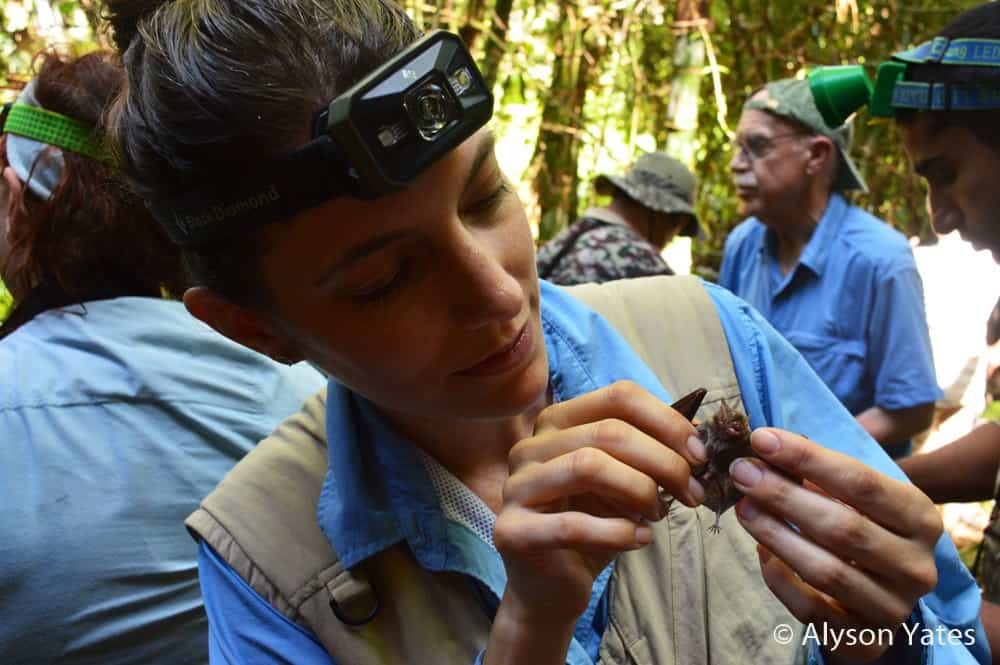
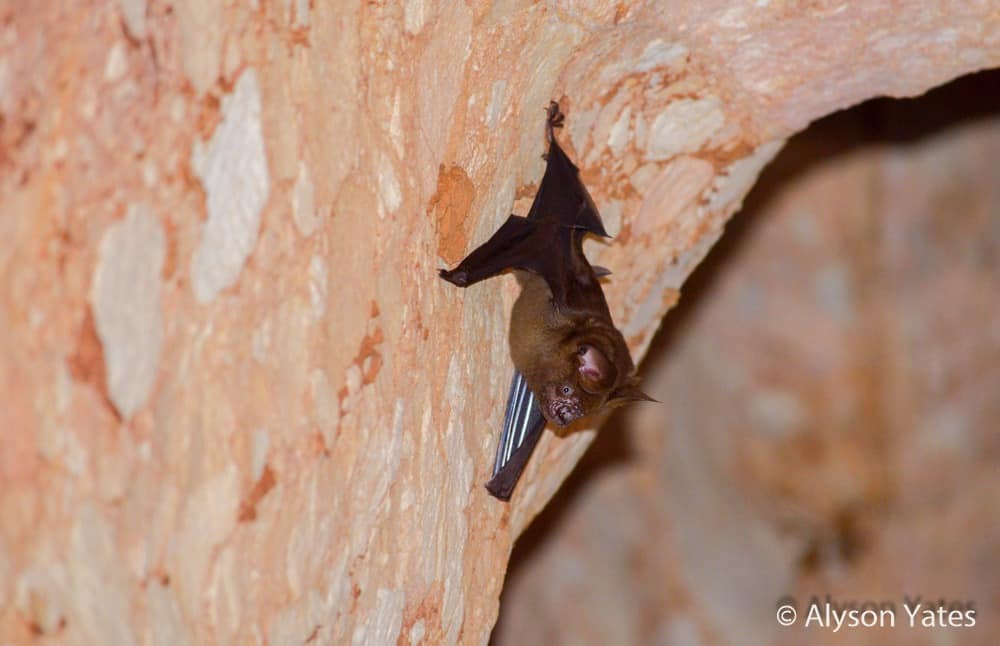
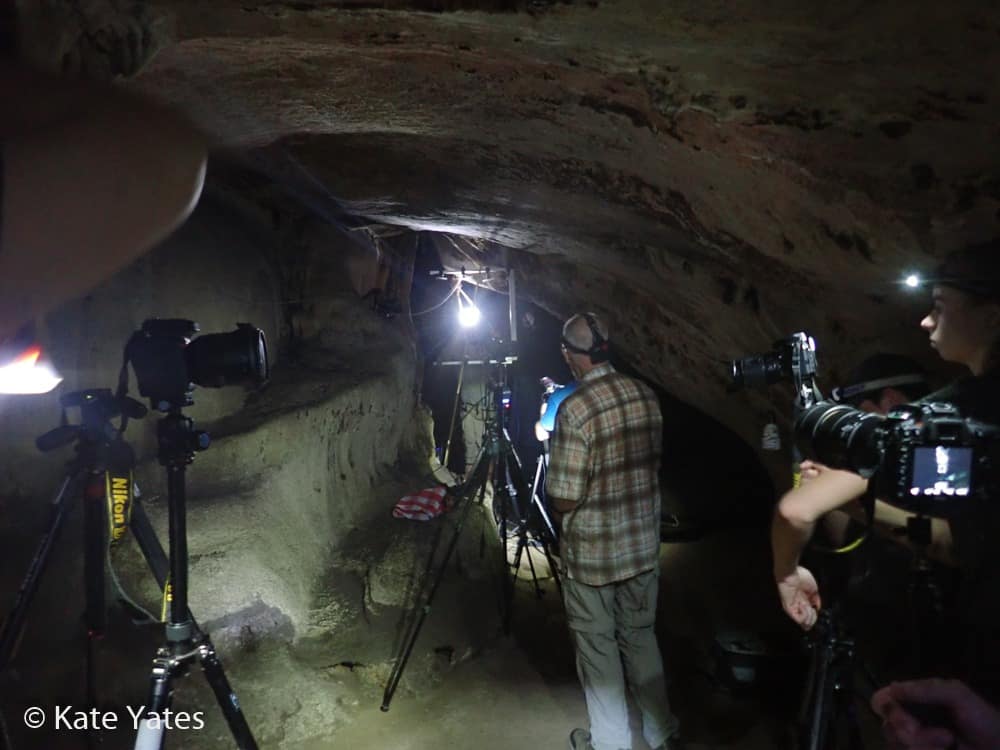
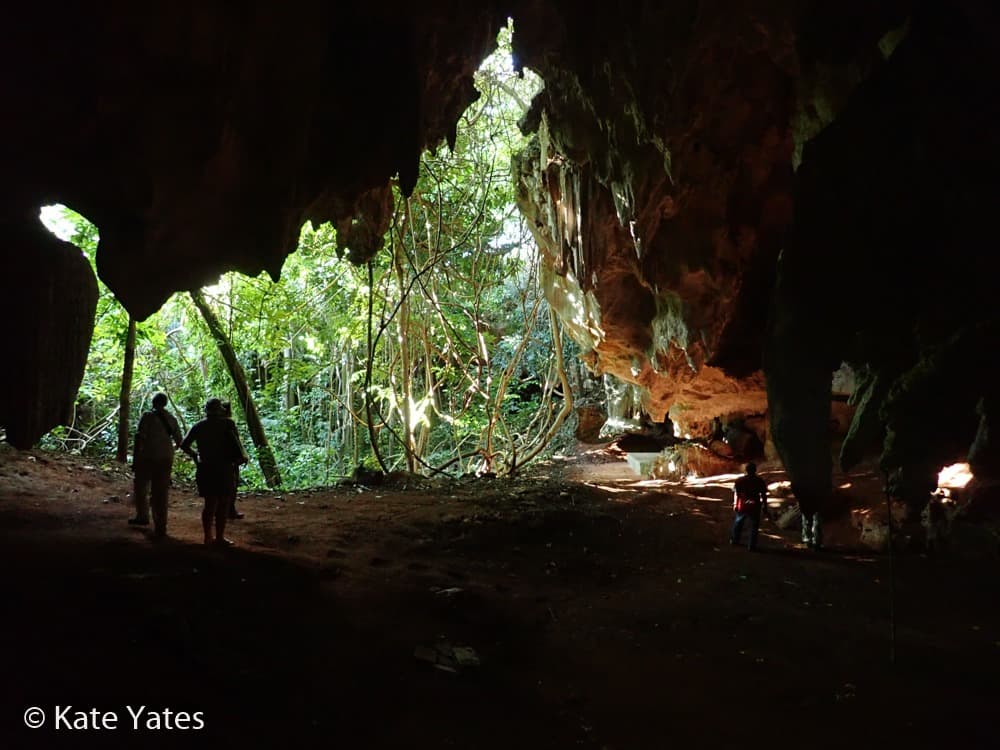
For several people, seeing this bat was a lifelong ambition as it is widely reputed to be the world’s smallest mammal. Nevertheless, as Merlin explained, several bats and a shrew are contenders for this distinction which cannot be resolved until more detail is obtained on annual weight cycles. The contenders are all close to two grams, plus or minus just a half gram! After several photos, the bats were filmed departing for secret recesses.
We next descended deeper inside where we found a group of great roundleaf bats (Hipposideros armiger) and observed as they “boxed” and jostled for social position. These large bats do not need to cluster to share warmth and are likely aided by a combination of body size and warmth of their caves. In fact, each strongly defends a minimum space from its nearest neighbor.
In the evening we set nets and traps again in the OurLand reserve and captured five species: one cave nectar bat, four lesser false vampire bats, one greater false vampire bat (Lyroderma lyra) and two new species for the reserve, one croslet horseshoe bat (Rhinolophus coelophyllus) and one eastern bent-winged bat (Miniopterus fuliginosus).
Merlin demonstrated to the group how he takes his iconic portraits of bats and one lesser false vampire bat was kept for training. While sitting in the small training tent, Kate fed the bat mealworms and slowly gained its trust.
An early start had us riding in dragon boats down the famous River Kwai to a remote cave along the border of Sai Yok National Park.
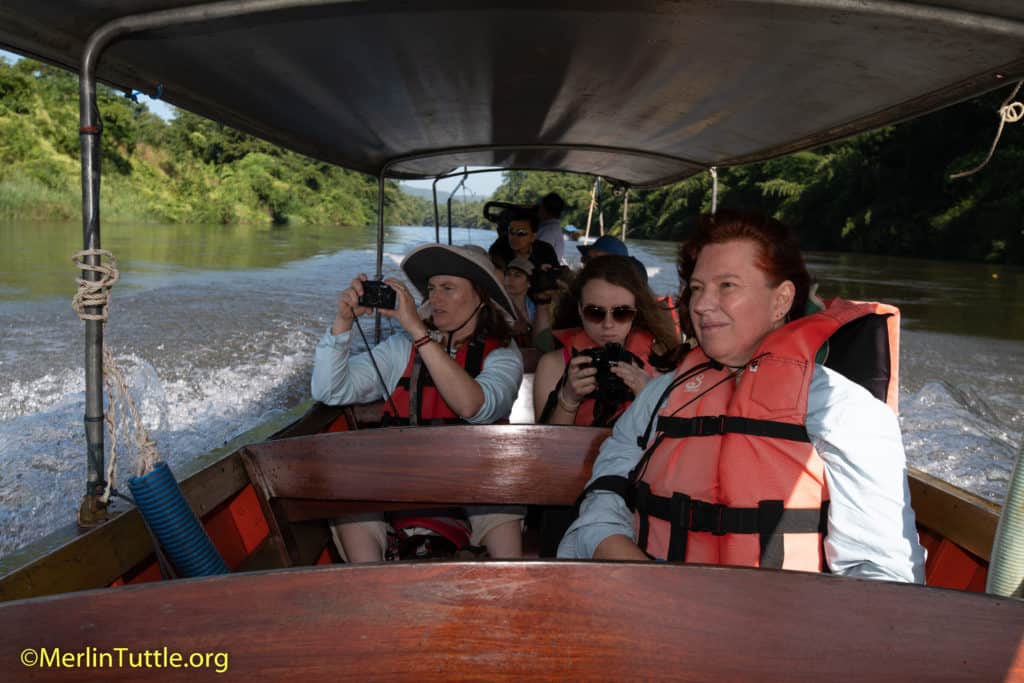
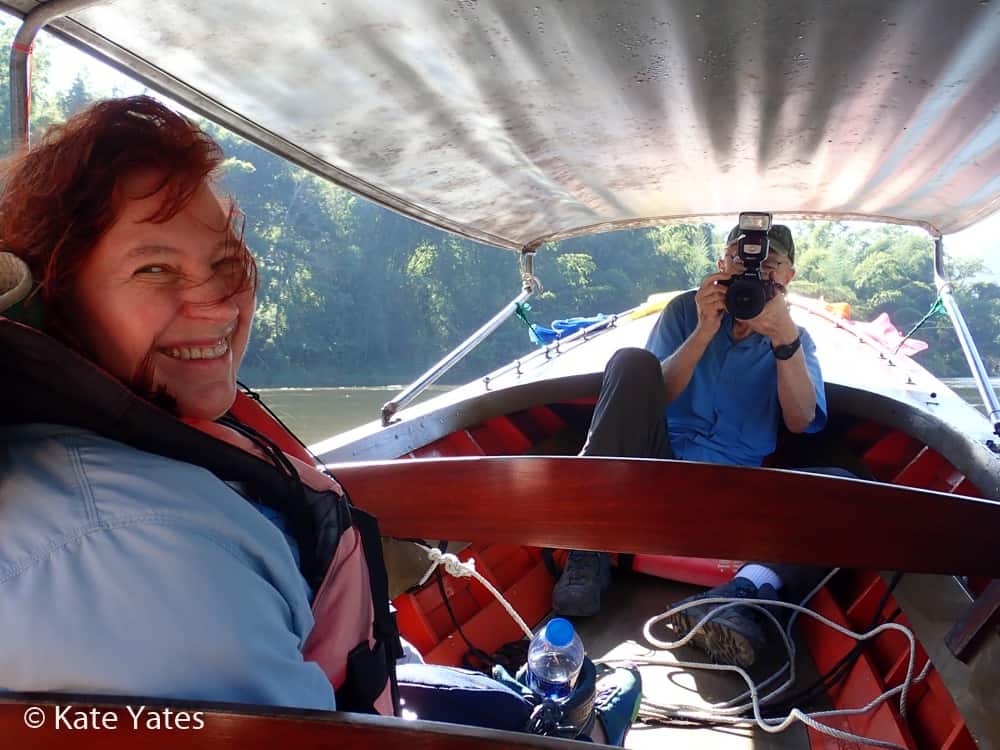
Following a 30-minute journey, we stopped and decided to hike the remainder of the way. A stream stood between us and the cave so, after finding a shallow point, we all waded across and up into the jungle.
The cave sheltered several bumblebee bats and the much larger, great roundleaf bat. I netted one of each to demonstrate the size difference between the species.
Several of us crawled through a tight squeeze into a larger chamber where we found the floor littered with the remnants of prey caught by a greater false vampire bat. On the hike back we each enjoyed a refreshing green coconut drink from a local farmer before getting back onto the dragon boats and heading home for lunch.
After lunch we drove a short distance past a Buddhist temple courtyard to explore a large limestone cave with many outcrops.
Guarded by the large shrines, we found groups of greater short-nosed fruit bats (Cynopterus sphinx) roosting in ceiling domes.
This is unusual behavior for this genus, something Merlin had not seen before. He speculated their yet undiscovered ability to echolocate. How else could they find a small dome in the ceiling on a dark night, some 60 feet from the entrance? Farther inside we found groups of lesser false vampire bats, bumblebee bats, and intermediate roundleaf bats (Hipposideros larvatus).
That evening, we set nets close to the river and along forest trails back at the reserve. We caught several more lesser false vampire bats and a single greater false vampire bat.
Following a hearty breakfast, our hosts at the OurLand reserve provided an outstanding introduction to the area’s snakes. Among other things, they demonstrated that although highly venomous, cobras are actually quite reluctant to bite.
Following the snake demonstration and a short drive, we visited a different cave owned by another monastery. The monks had built concrete stairs that included 340 steps up a steep ridge to the cave. We enjoyed the view over the valley, but not the climb.
Nevertheless, this vast cave was well worth the extra effort! Close to the entrance we found hundreds of roosting Theobald’s tomb bats (Taphozous theobaldi). Leanne captured several with a hand net to give the group a closer look. We then found several more species, including the area’s ever-abundant bumblebee bat, intermediate roundleaf bat, and the not-previously-seen large-eared roundleaf bats (Hipposideros pomona) and Dobson’s horseshoe bats (Rhinolophus yunanensis).
After a late lunch and brief rest we returned, this time climbing the 340 steps with over 100 kilograms of camera equipment. The steps seemed to have grown longer!
We set up a light beam in a narrow spot where exiting bats would have to pass prior to emerging from the cave. We then helped a half-dozen group members position their cameras on tripods, aimed and focused on the beam. As emerging bats struck the beam, everyone got a photo. We shot hundreds of photos of several species before climbing back down the steps in the dark.
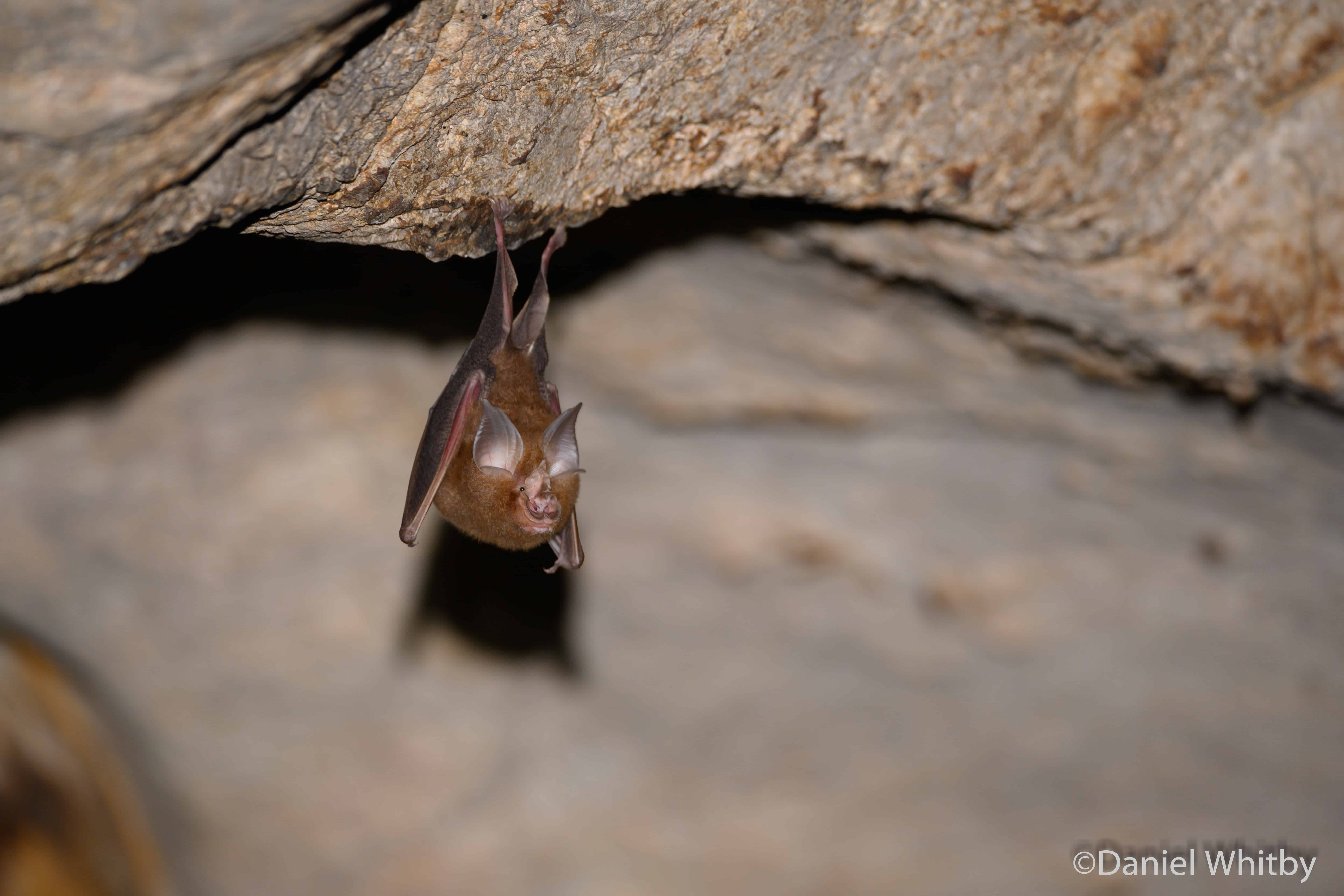
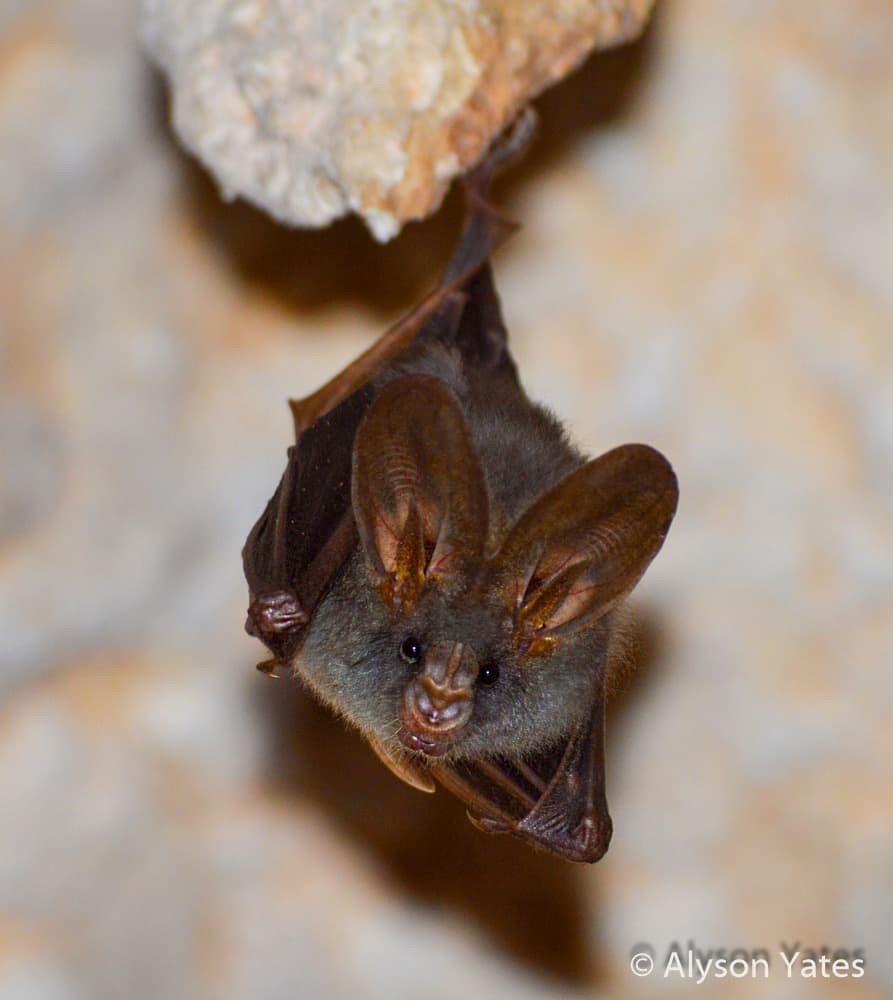
Soon after arriving back at camp we built a set in Merlin’s studio, mimicking the surrounding habitat and forest floor. A half dozen of us positioned our cameras on tripods, again focused on the beam to catch our tamed lesser false vampire bat flying through as it would if hunting.
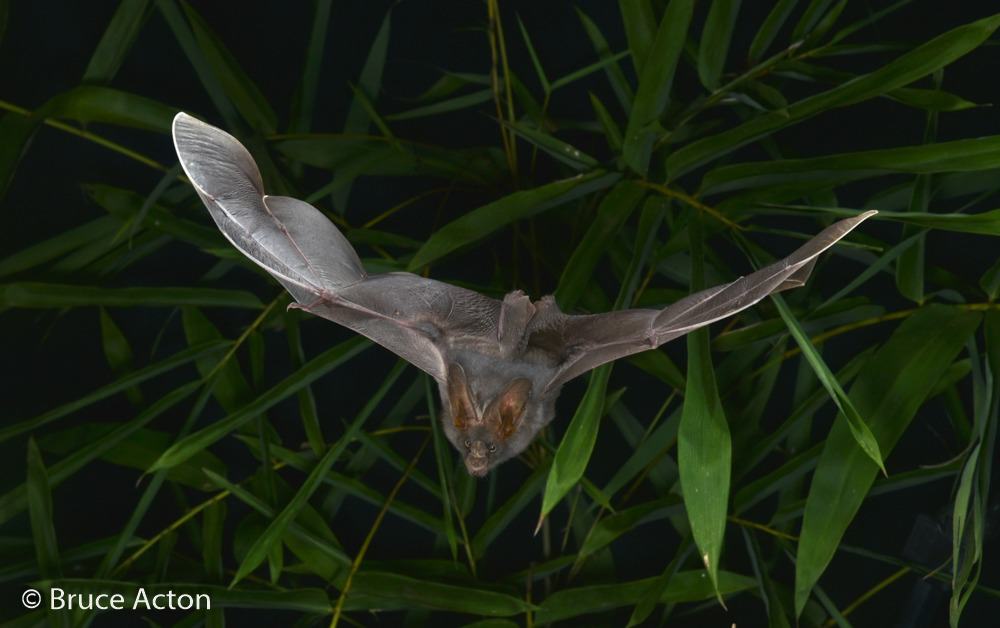
Once finished around midnight, all was disassembled, the now well-fed bat released, and Merlin’s studio packed in preparation for the next morning’s departure. Whilst everyone else slept, I could not resist staying up to photograph a cave nectar bat pollinating banana flowers outside the dormitories.
We waved goodbye to our hosts at OurLand and visited one final cave in Kanchanaburi. The cave was hidden on the grounds of a Buddhist monastery and after we gained permission to enter we passed several shrines and large ornate statues. Once we entered the cave, I quickly helped Merlin set up three flashes on stands to photograph a bumblebee bat hanging from my fingers. He wanted to illustrate its tiny size.
The group explored the cave and found a colony of roundleaf bats roosting high in the cave ceiling and a new species for the trip–a Pearson’s Horseshoe bat (Rhinolophus pearsonii)–roosting in a colder part of the cave. Once Merlin had the photos he needed, the group loaded up the vans and we continued our journey South to Ratchaburi.
NOTE: None of the cave-dwelling bats we handled were reproductively active or attempting to hibernate. They were netted by experts, handled gently, and released promptly at points of capture.
Love our content? Support us by sharing it!
Can we afford to lose bats? A recent study by Eyal Frank of the University of Chicago reveals that the dramatic decline in U.S. bat
Bats are among the most fascinating yet misunderstood creatures in the natural world, and for many conservationists, a single experience can ignite a lifelong passion
Many bat conservationists know that Kasanka National Park in Zambia is an exceptional place for bats, but it is also the place that sparked my
The Kasanka Trust is a non-profit charitable institution, which secures the future of biodiversity in Kasanka National Park in Zambia. They welcome internships for students
2024 © Merlin Tuttle’s Bat Conservation. All rights reserved.
Madelline Mathis has a degree in environmental studies from Rollins College and a passion for wildlife conservation. She is an outstanding nature photographer who has worked extensively with Merlin and other MTBC staff studying and photographing bats in Mozambique, Cuba, Costa Rica, and Texas. Following college graduation, she was employed as an environmental specialist for the Florida Department of Environmental Protection. She subsequently founded the Florida chapter of the International DarkSky Association and currently serves on the board of DarkSky Texas. She also serves on the board of Houston Wilderness and was appointed to the Austin Water Resource Community Planning Task Force.
Michael Lazari Karapetian has over twenty years of investment management experience. He has a degree in business management, is a certified NBA agent, and gained early experience as a money manager for the Bank of America where he established model portfolios for high-net-worth clients. In 2003 he founded Lazari Capital Management, Inc. and Lazari Asset Management, Inc. He is President and CIO of both and manages over a half a billion in assets. In his personal time he champions philanthropic causes. He serves on the board of Moravian College and has a strong affinity for wildlife, both funding and volunteering on behalf of endangered species.